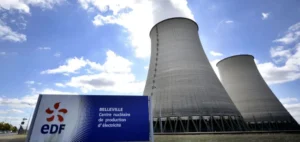The American group Westinghouse will build the first nuclear power plant in Poland for about 20 billion dollars, announced Wednesday the Polish Prime Minister Mateusz Morawiecki whose
The government has formally endorsed this choice in the face of competing bids from France’s EDF and South Korea’s KHNP.
For this first project, “we opted for American technology, located in northern Poland.
It is the most advanced and safe technology. In the decision, we have indicated our partner and it is the American Westinghouse,” Morawiecki told the press, in
confirming the announcement he made on Twitter last Friday.
The financial arrangements for the investment have not yet been decided, the Prime Minister said.
The site, located in Lubiatowo-Kopalino, near Choczewo in the north of the country, is scheduled to begin operation in 2033.
Poland is currently planning to eventually host three nuclear sites with three reactors each, with an overall maximum capacity of 15 GW, which would represent about 30% of the country’s energy mix.
The decision on who to entrust with a second project included in the government’s nuclear power development program is to be made “in the coming quarters,” Morawiecki said.
A third project, announced recently, to everyone’s surprise, by the Minister of State Assets, and concretized by a letter of intent signed on Monday, concerns the construction of a nuclear power plant in Poland by the South Korean group KHNP and the Polish PGE (controlled by the State) and ZE PAK (private).
This letter concerns a nuclear power plant probably located in the vicinity of Patnow (central Poland), based on the APR1400 technology developed by KHNP.
Poland had been planning for years to develop the capacity to produce nuclear energy for civilian purposes, and the issue of energy security has become more urgent due to Russia’s invasion of Ukraine.






















